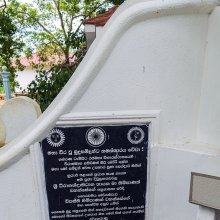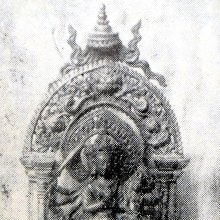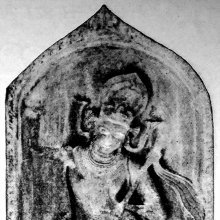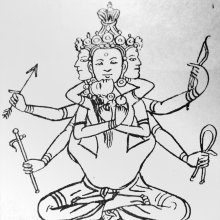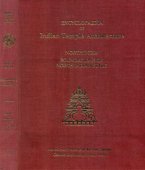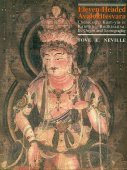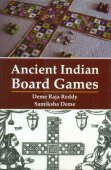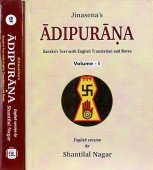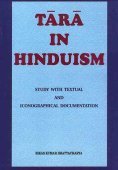Gupta, Guptā: 30 definitions
Introduction:
Gupta means something in Buddhism, Pali, Hinduism, Sanskrit, Jainism, Prakrit, the history of ancient India, Marathi, Hindi. If you want to know the exact meaning, history, etymology or English translation of this term then check out the descriptions on this page. Add your comment or reference to a book if you want to contribute to this summary article.
Alternative spellings of this word include Gupt.
Images (photo gallery)
(+7 more images available)
In Hinduism
Purana and Itihasa (epic history)
Source: archive.org: Puranic EncyclopediaGupta (गुप्त).—A caste appellation. In ancient India appellations to the names were put to distinguish one caste from another. So 'Śarmā' was added to a brahmin name, 'Varmā' to a Kṣatriya name 'Gupta' to a Vaiṣya name and 'Dāsa' to a Śūdra name. Such appellations were considered to be a mark of nobility in those olden days. (Chapter 153, Agni Purāṇa).
Source: archive.org: Shiva Purana - English TranslationGupta (गुप्त) refers to “being protected (on either side)”, according to the Śivapurāṇa 2.4.6 (“The miraculous feat of Kārttikeya”).—Accordingly, as a Brahmin named Nārada said to Kumāra (Kārttikeya): “[...] If you are the protector with efficient honour what harm can an opponent do even if he be strong and efficient and protected on either side (pārśva-gupta)? What harm can even Takṣaka or even a carnivorous animal do unto him. [...]”.
Source: Cologne Digital Sanskrit Dictionaries: The Purana Index1a) Gupta (गुप्त).—Appellation for Vaiśya.*
- * Viṣṇu-purāṇa III. 10. 9.
1b) A group of sixteen śaktis.*
- * Brahmāṇḍa-purāṇa IV. 19. 16 and 23.
1c) Rulers of the territory from Gayā to Prayāga.*
- * Viṣṇu-purāṇa IV. 24. 63.
Guptā (गुप्ता) is a name mentioned in the Mahābhārata (cf. V.158.19, VIII.23.33, VIII.30.63, VIII.30.76, VIII.51.6, VIII.51.10) and represents one of the many proper names used for people and places. Note: The Mahābhārata (mentioning Guptā) is a Sanskrit epic poem consisting of 100,000 ślokas (metrical verses) and is over 2000 years old.

The Purana (पुराण, purāṇas) refers to Sanskrit literature preserving ancient India’s vast cultural history, including historical legends, religious ceremonies, various arts and sciences. The eighteen mahapuranas total over 400,000 shlokas (metrical couplets) and date to at least several centuries BCE.
Ayurveda (science of life)
Nighantu (Synonyms and Characteristics of Drugs and technical terms)
Source: WorldCat: Rāj nighaṇṭuGuptā (गुप्ता) is another name for Kapikacchu, a medicinal plant identified with Mucuna pruriens (velvet bean or cowhage or cowitch) from the Fabaceae or “bean family” of flowering plants, according to verse 3.50-53 of the 13th-century Raj Nighantu or Rājanighaṇṭu. The third chapter (guḍūcyādi-varga) of this book contains climbers and creepers (vīrudh). Together with the names Guptā and Kapikacchu, there are a total of twenty-six Sanskrit synonyms identified for this plant.

Āyurveda (आयुर्वेद, ayurveda) is a branch of Indian science dealing with medicine, herbalism, taxology, anatomy, surgery, alchemy and related topics. Traditional practice of Āyurveda in ancient India dates back to at least the first millenium BC. Literature is commonly written in Sanskrit using various poetic metres.
Shilpashastra (iconography)
Source: Shodhganga: The significance of the mūla-beras (śilpa)Gupta Dynasty (3rd century CE).—The iconography that originated in Mathura (1st-2nd century AD) continued in the fourth century and developed and attained maturity in the golden age of the Guptas (4th-5th centuries). The Gupta period lasted till the 7th century in the North and this period was called the classical period of Indian sculpture and fresco painting. It was about this time that bronze images really came into existence in South India, although the art of metal casting had been known for a long time and a few images had been made previously. It is to be noted that the Indian art reached its zenith in the post-Gupta period.
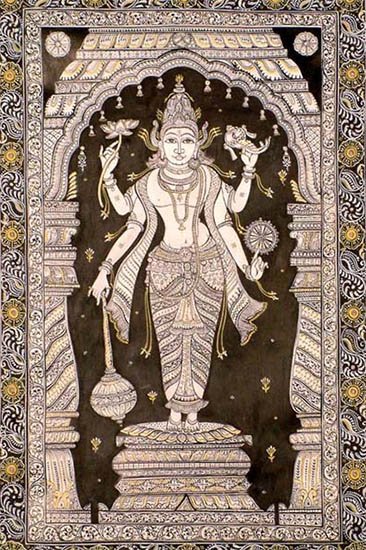
Shilpashastra (शिल्पशास्त्र, śilpaśāstra) represents the ancient Indian science (shastra) of creative arts (shilpa) such as sculpture, iconography and painting. Closely related to Vastushastra (architecture), they often share the same literature.
Shaktism (Shakta philosophy)
Source: Google Books: ManthanabhairavatantramGupta (गुप्त) is the name of the ‘secret seat’ associated with Pūrṇagiri, one of the sacred seats (pīṭha), according to the Manthānabhairavatantra, a vast sprawling work that belongs to a corpus of Tantric texts concerned with the worship of the goddess Kubjikā.—Note: Another unusual feature of this setup is the addition of secret seats [i.e., Gupta], but this has not been done very systematically. One ‘secret’ seat is missing and only one ‘secret’ Siddha is mentioned. The purpose of this addition seems to be to integrate Koṅkaṇa into the scheme, not an entire set of alternative seats.

Shakta (शाक्त, śākta) or Shaktism (śāktism) represents a tradition of Hinduism where the Goddess (Devi) is revered and worshipped. Shakta literature includes a range of scriptures, including various Agamas and Tantras, although its roots may be traced back to the Vedas.
Yoga (school of philosophy)
Source: ORA: Amanaska (king of all yogas): A Critical Edition and Annotated Translation by Jason BirchGupta (गुप्त) refers to “private”, according to the Amanaska Yoga treatise dealing with meditation, absorption, yogic powers and liberation.—Accordingly, as Īśvara says to Vāmadeva: “The Vedas, [all religious, philosophical, legal, etc.] treatises and the Purāṇas are like common whores. Only Śāmbhavī Mudrā is kept private (gupta) like the wife of a good family. The point of focus is internal, [yet] the gaze is outward and free from closing and opening the eyes. Indeed, this is Śāmbhavī Mudrā, which is hidden in all the Tantras”.

Yoga is originally considered a branch of Hindu philosophy (astika), but both ancient and modern Yoga combine the physical, mental and spiritual. Yoga teaches various physical techniques also known as āsanas (postures), used for various purposes (eg., meditation, contemplation, relaxation).
In Buddhism
Tibetan Buddhism (Vajrayana or tantric Buddhism)
Source: archive.org: The Indian Buddhist IconographyGuptā (गुप्ता) is the Śakti of Civikuṇḍalī, and together forms one of the eight Yakṣa and Śakti pairs occupying the double lotus in the sādhana of Jambhala (yab-yum form), as described in the 5th-century Sādhanamālā (a collection of sādhana texts that contain detailed instructions for rituals).—Accordingly, when represented in Yab-Yum, he sits on the moon under which there is a double lotus of eight petals. [...] The eight petals of the lotus seat are occupied by the eight Yakṣas [viz., Civikuṇḍalī], who are identical in all respects with the principal figure. Each Yakṣa is accompanied by a Śakti [viz., Guptā] with whom he remains in Yab-Yum in the same way as Jambhala remains with Vasudhārā [...]. The Yakṣiṇīs are identical in form with Vasudhārā, who is yellow in complexion, carries the ears of corn and shows the Varada-mudrā in her two hands.]

Tibetan Buddhism includes schools such as Nyingma, Kadampa, Kagyu and Gelug. Their primary canon of literature is divided in two broad categories: The Kangyur, which consists of Buddha’s words, and the Tengyur, which includes commentaries from various sources. Esotericism and tantra techniques (vajrayāna) are collected indepently.
Mahayana (major branch of Buddhism)
Source: De Gruyter: A Buddhist Ritual Manual on AgricultureGupta (गुप्त) refers to “safeguard”, according to the Vajratuṇḍasamayakalparāja, an ancient Buddhist ritual manual on agriculture from the 5th-century (or earlier), containing various instructions for the Sangha to provide agriculture-related services to laypeople including rain-making, weather control and crop protection.—Accordingly, [As the Bhagavān teaches an offering manual]: “[...] All crops, all flowers and fruits will be well protected. [...] Until the stake is drawn out there will be comfort and plenty, and all crops, flowers and fruits develop. They will be juicy and tender (mṛdu). All Nāgas will constantly provide protection, shelter and safeguard (gupta). [...]”.

Mahayana (महायान, mahāyāna) is a major branch of Buddhism focusing on the path of a Bodhisattva (spiritual aspirants/ enlightened beings). Extant literature is vast and primarely composed in the Sanskrit language. There are many sūtras of which some of the earliest are the various Prajñāpāramitā sūtras.
In Jainism
General definition (in Jainism)
Source: academia.edu: The epoch of the Mahavira-nirvanaGupta dynasty according to Harivamsa Purana and Tiloyapannati.—Starting from the epoch of Mahavira nirvana (1189 BCE), Palaka ruled for 60 years, Vishaya kings for 150 years, Murundas for 40 years, Pushpamitra for 30 years, Vasumitra & Agnimitra for 60 years, Gandhavvaya or Rasabha kings for 100 years, Naravahana for 40 years, Bhattubanas for 242 years and Guptas for 231 years.
Source: The University of Sydney: A study of the Twelve ReflectionsGupta (गुप्त) refers to “control” (of the body), according to the 11th century Jñānārṇava, a treatise on Jain Yoga in roughly 2200 Sanskrit verses composed by Śubhacandra.—Accordingly, “One who is restrained continually accumulates good karma by the activity of the body through his body which is well-controlled (sugupta) [com.—which is controlled (guptena)] or by abandoning the body. The body of embodied souls attaches to bad karmas through actions which possess constant exertion and which kill living beings”.

Jainism is an Indian religion of Dharma whose doctrine revolves around harmlessness (ahimsa) towards every living being. The two major branches (Digambara and Svetambara) of Jainism stimulate self-control (or, shramana, ‘self-reliance’) and spiritual development through a path of peace for the soul to progess to the ultimate goal.
India history and geography
Source: Wikipedia: India HistoryThe Gupta Empire was an ancient Indian empire existing from the mid-to-late 3rd century CE to 590 CE. The ruling dynasty of the empire was founded by the king Sri Gupta; the most notable rulers of the dynasty were Chandragupta I, Samudragupta, and Chandragupta II. The 5th-century CE Sanskrit poet Kalidasa credits the Guptas with having conquered about twenty-one kingdoms, both in and outside India, including the kingdoms of Parasikas, the Hunas, the Kambojas, tribes located in the west and east Oxus valleys, the Kinnaras, Kiratas, and others.
According to the Puranas, the territory of the early Gupta kings included Prayaga, Saketa, and other areas in the Ganges basin. The Gupta records do not mention the dynasty's varna (social class). Some historians, such as A. S. Altekar, have theorized that they were of Vaishya origin. Some scholars, such as S. R. Goyal, theorize that the Guptas were Brahmanas, because they had matrimonial relations with Brahmanas.
Source: Cologne Digital Sanskrit Dictionaries: Indian Epigraphical GlossaryGupta.—cf. gupta-akṣarāṇi (LP), same as gupta-patḷaka, a deed of permanent lease. See Tamil guttagai = Sanskrit guptakā. Note: gupta is defined in the “Indian epigraphical glossary” as it can be found on ancient inscriptions commonly written in Sanskrit, Prakrit or Dravidian languages.
Source: Shodhganga: Elements of Art and Architecture in the Trtiyakhanda of the Visnudharmottarapurana (history)Gupta refers to a certain period in the history of Indian Art.—The chronological order of the development of Indian Art as stated in The Heritage of Indian Art is as follows—[...] 9. Gupta Period comprises the time from 320 A.D to 600 A.D. The Gupta period is regarded as the Golden age of literature and Art in Indian History. Stone temples at Sanchi, Bhumra, Deogarh, brick temple at Bhitargaon etc. are the greatest construction of Art in Gupta Period. The Dhamekh stupa at Sarnath, Fresco painting on the walls of the caves of Ajanta and Bagh are also the remarkable contribution of the people of Gupta period.

The history of India traces the identification of countries, villages, towns and other regions of India, as well as mythology, zoology, royal dynasties, rulers, tribes, local festivities and traditions and regional languages. Ancient India enjoyed religious freedom and encourages the path of Dharma, a concept common to Buddhism, Hinduism, and Jainism.
Languages of India and abroad
Marathi-English dictionary
Source: DDSA: The Molesworth Marathi and English Dictionarygupta (गुप्त).—p (S) Hidden or concealed. 2 S Preserved or protected.
Source: DDSA: The Aryabhusan school dictionary, Marathi-Englishgupta (गुप्त).—p Hidden; preserved.
Marathi is an Indo-European language having over 70 million native speakers people in (predominantly) Maharashtra India. Marathi, like many other Indo-Aryan languages, evolved from early forms of Prakrit, which itself is a subset of Sanskrit, one of the most ancient languages of the world.
Sanskrit dictionary
Source: DDSA: The practical Sanskrit-English dictionaryGupta (गुप्त).—p. p. [gup karmaṇi kta]
1) Protected, preserved, guarded; गुप्तं ददृशुरात्मानं सर्वाः स्वप्नेषु वामनैः (guptaṃ dadṛśurātmānaṃ sarvāḥ svapneṣu vāmanaiḥ) R.1.6.
2) Hidden, concealed, kept secret; Manusmṛti 2.16;7.76; 8.374.
3) Secret, private.
4) Invisible, withdrawn from sight.
5) Joined.
-ptaḥ 1 An appellation usually (though not necessarily) added to the name of a Vaiśya; as जन्द्रगुप्तः, समुद्रगुप्तः (jandraguptaḥ, samudraguptaḥ) &c. (Usually śarman or deva is added to the name of a Brāhmaṇa; gupta, bhūti or datta to that of a Vaiśya; and dāsa to that of a Śūdra; cf. śarmā devaśca viprasya varmā trātā ca bhūbhujaḥ | bhūtirdattaśca vaiśyasya dāsaḥ śūdrasya kārayet).
2) An epithet of Viṣṇu.
-ptam ind. Secretly, privately, apart.
-ptā One of the principal female characters in a poetical composition, a lady married to another (parakīyā) who conceals her lover's caresses and endearments past, present and future; वृत्तसुरतगोपना, वर्तिष्यमाणसुरतगोपना (vṛttasuratagopanā, vartiṣyamāṇasuratagopanā) and वर्तमानसुरतगोपना (vartamānasuratagopanā); see Rasamañjarī 24.
Source: Cologne Digital Sanskrit Dictionaries: Edgerton Buddhist Hybrid Sanskrit DictionaryGupta (गुप्त).—name of a perfumer: Divyāvadāna 348.23; 351.5 ff.; 385.6; Mūla-Sarvāstivāda-Vinaya i.4.2. On gupta see also s.v. gupti.
--- OR ---
Guptā (गुप्ता).—name of a yakṣiṇī: Sādhanamālā 561.2; 562.4.
Source: Cologne Digital Sanskrit Dictionaries: Shabda-Sagara Sanskrit-English DictionaryGupta (गुप्त).—mfn.
(-ptaḥ-ptā-ptaṃ) 1. Preserved, protected. 2. Hidden, concealed, secret. 3. Joined, combined. 4. Invisible, wlthdrawn from sight. n. adv
(-ptaṃ) Privately, secretly. m.
(-ptaḥ) An appellation forming especially the second member of the name of a Vaisya or man of the third class. f.
(-ptā) 1. Cowach. 2. A woman who hides from her lover’s endearments. E. gup to defend, &c. affix ū.
Source: Cologne Digital Sanskrit Dictionaries: Cappeller Sanskrit-English DictionaryGupta (गुप्त).—[adjective] kept, preserved, guarded, hidden, secret; [neuter] [adverb] privately, secretly, [locative] at a secret place; [masculine] [Name] of [several] kings, [especially] —°.
Source: Cologne Digital Sanskrit Dictionaries: Aufrecht Catalogus CatalogorumGupta (गुप्त) as mentioned in Aufrecht’s Catalogus Catalogorum:—grammarian. Quoted in the Kṣīrataraṅgiṇī and the Mādhavīyadhātuvṛtti.
Source: Cologne Digital Sanskrit Dictionaries: Monier-Williams Sanskrit-English Dictionary1) Gupta (गुप्त):—[from gup] mfn. protected, guarded, preserved, [Atharva-veda] etc.
2) [v.s. ...] hidden, concealed, kept secret, secret, [Bhartṛhari; Pañcatantra; Kathāsaritsāgara] etc. (with daṇḍa, a secret fine, fine secretly imposed or exacted, [Hitopadeśa]; cf. gūḍha-d)
3) [v.s. ...] = saṃgata (? joined, combined), [Horace H. Wilson]
4) [from gup] m. ([Pāṇini 6-1, 205; Kāśikā-vṛtti]) Name of several men belonging to the Vaiśya caste ([Pāraskara-gṛhya-sūtra i, 17]; cf. [Religious Thought and Life in India] p.358), especially of the founder of the renowned Gupta dynasty in which the names of the sovereigns generally end in gupta (cf. candra-, samudra-, skanda-; gupta is also often found ifc. in names of the Vaiśya class)
5) Guptā (गुप्ता):—[from gupta > gup] f. a married woman who withdraws from her lover’s endearments, [cf. Lexicographers, esp. such as amarasiṃha, halāyudha, hemacandra, etc.]
6) [v.s. ...] Mucuna pruritus, [Suśruta iv, 26, 33; vi, 46, 21] (pta)
7) [v.s. ...] Name of a woman, [Pāṇini 4-1, 121 [Scholiast or Commentator]] (gopā, [Kāśikā-vṛtti])
8) [v.s. ...] of a Śākya princess, [Buddhist literature]
9) Gupta (गुप्त):—[from gup] m. (also) the era named after the Gupta dynasty (beginning, [Apte’s The Practical Sanskrit-English Dictionary]D. 319; hence the Gupta year 165 corresponds to, [Apte’s The Practical Sanskrit-English Dictionary]D. 484-85; in later times the years are called valabhī-saṃvat from the rulers of Valabhi, and the era is spoken of as the Gupta-Valabhi era).
Source: Cologne Digital Sanskrit Dictionaries: Yates Sanskrit-English DictionaryGupta (गुप्त):—[(ptaḥ-ptā-ptaṃ) a.] Preserved; hidden. f. Cowach. n. Secretly.
Source: DDSA: Paia-sadda-mahannavo; a comprehensive Prakrit Hindi dictionary (S)Gupta (गुप्त) in the Sanskrit language is related to the Prakrit words: Utta, Gutta, Guvia.
[Sanskrit to German]
Sanskrit, also spelled संस्कृतम् (saṃskṛtam), is an ancient language of India commonly seen as the grandmother of the Indo-European language family (even English!). Closely allied with Prakrit and Pali, Sanskrit is more exhaustive in both grammar and terms and has the most extensive collection of literature in the world, greatly surpassing its sister-languages Greek and Latin.
Hindi dictionary
Source: DDSA: A practical Hindi-English dictionaryGupta (गुप्त) [Also spelled gupt]:—(a) hidden, secret, latent; confidential; ~[ghāta] assassination; ~[ghātī] an assassin; ~[tā] secrecy; —[dāna] anonymous donation; —[dhana] hidden treasure.
...
Kannada-English dictionary
Source: Alar: Kannada-English corpusGupta (ಗುಪ್ತ):—[adjective] kept or meant to be kept private, unknown or hidden from all or all but a few; secret; confidential.
--- OR ---
Gupta (ಗುಪ್ತ):—
1) [noun] a thing kept or meant to be kept secret or known only to a few; a secret.
2) [noun] the state of being incognito.
Kannada is a Dravidian language (as opposed to the Indo-European language family) mainly spoken in the southwestern region of India.
See also (Relevant definitions)
Starts with (+53): Gupta-pattaka, Gupta-polisa, Guptabhashe, Guptabindu, Guptacara, Guptacarashakhe, Guptacarike, Guptacarini, Guptachara, Guptadana, Guptadhana, Guptadikshatantra, Guptaduta, Guptadvara, Guptagami, Guptagamini, Guptagandhi, Guptagangamahatmya, Guptagati, Guptaghala.
Ends with (+176): Abhayakaragupta, Abhayankaragupta, Abhigupta, Abhinavagupta, Abhisamgupta, Adhigupta, Adhogupta, Agupta, Amaragupta, Amragupta, Anantagupta, Anekagupta, Anigupta, Anugravarnakshemagupta, Anugupta, Arigupta, Aryagupta, Ashvagupta, Atigupta, Atmagupta.
Full-text (+971): Manogupta, Candragupta, Atmagupta, Karagupta, Gaupteya, Guptagati, Carugupta, Guptacara, Svayamgupta, Svagupta, Ghatotkaca, Suguptam, Gupita, Vishnugupta, Guptam, Gutta, Samudragupta, Balagupta, Guptagriha, Upagupta.
Relevant text
Search found 132 books and stories containing Gupta, Guptā; (plurals include: Guptas, Guptās). You can also click to the full overview containing English textual excerpts. Below are direct links for the most relevant articles:
Garga Samhita (English) (by Danavir Goswami)
Verse 2.15.7 < [Chapter 15 - Description of Śrī Rādhā-Kṛṣṇa’s Falling in Love]
Verse 1.16.8 < [Chapter 16 - Description of Śrī Rādhikā’s Wedding]
Verse 3.5.22 < [Chapter 5 - The Dispute Among the Gopas]
Manusmriti with the Commentary of Medhatithi (by Ganganatha Jha)
Verse 8.378 < [Section XLVI - Adultery]
Verse 8.382 < [Section XLVI - Adultery]
Verse 7.76 < [Section VI - Fortification (durga)]
Sahitya-kaumudi by Baladeva Vidyabhushana (by Gaurapada Dāsa)
Text 11.13 < [Chapter 11 - Additional Ornaments]
Text 11.4 [Bindu-cyutaka] < [Chapter 11 - Additional Ornaments]
Text 11.15 < [Chapter 11 - Additional Ornaments]
Stupas in Orissa (Study) (by Meenakshi Chauley)
During the Gupta period < [Chapter 2]
Buddhist Icons as depicted on the Stupas (Introduction) < [Chapter 5]
Development of Stupa Architecture in India < [Chapter 3]
Kamashastra Discourse (Life in Ancient India) (by Nidheesh Kannan B.)
5. Cultural Productions < [Chapter 1 - Rise of Urbanization and Luxury Life in India]
4. Evolutions in Gupta Period < [Chapter 1 - Rise of Urbanization and Luxury Life in India]
10. Erotic Culture < [Chapter 1 - Rise of Urbanization and Luxury Life in India]
Chaitanya Bhagavata (by Bhumipati Dāsa)
Verse 2.10.31 < [Chapter 10 - Conclusion of the Lord’s Mahā-prakāśa Pastimes]
Verse 2.18.87-089 < [Chapter 18 - Mahāprabhu’s Dancing as a Gopī]
Verse 2.20.61-065 < [Chapter 20 - The Glories of Murāri Gupta]
Related products
(+5 more products available)

